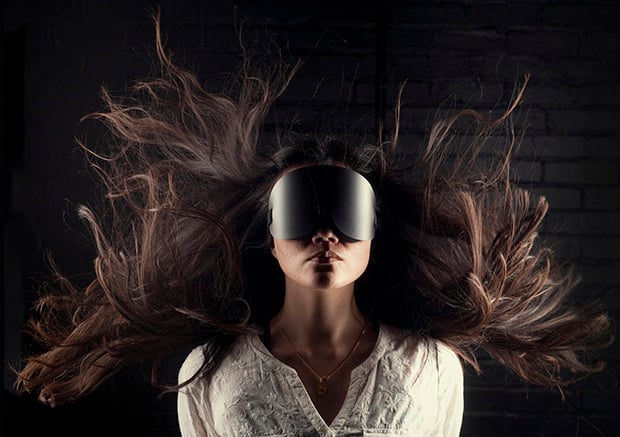EarFilms finished its American tour this past weekend, performing its unique and immersive piece “To Sleep To Dream” at Stanford’s Bing Concert Hall. The production consisted of a “sonic film,” an auditory story communicated to a blindfolded audience who are prompted to imagine the action they hear. Television sets, futuristic machines and raindrops on rooftops compromise some of the many sounds that bring this sonic world to life. The plot, narrated by British storyteller and musician Daniel Marcus Clark, follows a disheartened and disillusioned worker named Jack through his life in a dystopian city, where nameless, totalitarian powers regulate his every movement and dreaming is banned. The story juxtaposes the eerie and mechanic noises of Jack’s reality with the soothing and organic sounds of his forbidden dreams. Ultimately, it is through dreaming that Jack, and we as audience members, can reimagine and eventually transform our lives.
Audience members were led into a customized room of the Bing Concert Hall, outfitted with more than 20 concentric speakers oriented in an immersive, three-dimensional, dome-like configuration. On each seat was a foam-cushioned blindfold, which enabled listeners to comfortably keep their eyes open while remaining in a state of total darkness. By depriving people of their sight, EarFilms prompts us to compensate by relying on our ears, nose and mind to animate the darkness. The hour-and-a-half show featured music, ambient noise, dialogue and narration. Afterward, the audience was invited to a room where they could draw what they had experienced, envisioned or dreamed, and observe the responses of professional artists who had attended the show all around the world.
“To Sleep To Dream” challenges listeners to be active, engaged, and brave participants in the experience. “There’s no wrong way to do this,” we are reassured by a producer before the film. In a question-and-answer session following the performance, the directors explained that different audiences have responded in various ways to the show’s rich musical score, suggesting that our imaginations are heavily influenced by geographic location and political climate. “To Sleep To Dream” also raises questions about the degree to which our imaginations have become racialized, gendered and colonized. One female audience member questioned the use of an identifiably masculine narrator, expressing her difficulty with seeing the world through his eyes. EarFilms plans to diversify their writing team and experiment with varied narrators in future shows, but they acknowledged this as a significant obstacle to the production’s goals.
The show tiptoes a fine line between freedom and guidance, trying to balance the need to orient the audience with auditory clues and the desire to allow the audience’s collection imagination to wander by providing space, ambiguity and silence. The production team seemed mostly preoccupied with the former, leading to stretches of the film that felt oversaturated with sonic stimuli. Imagination becomes more difficult when the ears are bombarded with dystopian television advertisements, robotic instructions, heavy breathing, and other ambient noises. In fact, some of the most powerful moments of “To Sleep To Dream” came in between “chapters” in the story, when, just for the briefest moment, the room became absolutely silent. Through the total absence of sound, light, or any other sensory guideposts, the imagination becomes our sole and chief means of understanding our place in the world. In these moments, “To Sleep To Dream” delivered on its promise, disorienting us to the point where we became more aware, more present and more perceptive as human beings. After the final notes emanated from the speakers and echoed around the theater, after the house lights turned on again and the sunlight outside animated the world around, the world didn’t look quite the same. Imagination can’t be contained in the stories it excites. “To Sleep To Dream” is not just an artistic experience, but a training session for how to be in the world.
Contact Alessandro Hall at ahall2 ‘at’ stanford.edu.
